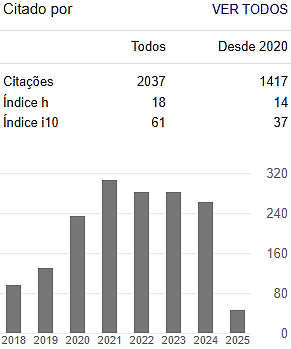HYDROTHERMIC TREATMENT IN THE SOFT ROT CONTROL IN POTATOES AND THEIR CHANGES IN THE POST-HARVEST CHARACTERISTICS
Palavras-chave:
ágata, physical treatment, Pectobacterium, Solanum tuberosum L.Resumo
Several strategies have been the object of studies to control soft rot in potatoes, but in many cases they are based on methods that, even though they present promising results, demand a high investment, besides the difficulty of being applied in large volumes, which makes the use of hydrothermal treatment an interesting alternative. The aim of this study was to evaluate the influence of different immersion temperatures used in the hydrothermal treatment on the post-harvest quality of the treated tubers. The experiment was conducted following a completely randomized design with five immersion temperatures: control, 40, 50, 60 and 70 C °, and five storage periods: 0, 5, 10, 15 and 20 days. Post-harvest quality determination was performed by evaluating pulp firmness, pH, titratable acidity (% citric acid) and soluble solids content (° Brix) Throughout the storage period the tubers with symptoms of soft rot were counted and discarded. The immersion temperature caused changes in the parameters of pulp firmness, titratable acidity and soluble solids content. Tubers submitted to immersion temperature of 70 ° C were all eliminated on the 5th day of evaluation. The immersion of potatoes at 40 ° C was the most efficient in reducing the appearance of soft rot, while maintaining the physical-chemical characteristics of the treated tubers during the storage period of 20 days.
Downloads
Downloads
Publicado
Edição
Seção
Licença
Copyright (c) 2019 Colloquium Agrariae. ISSN: 1809-8215

Este trabalho está licenciado sob uma licença Creative Commons Attribution-NonCommercial-NoDerivatives 4.0 International License.

